Immersed in the Parco Naturale dei Monti Simbruini, Subiaco is the cradle of Benedictine Monasticism and the birthplace of the printing art in Italy. Nerone chose this spot for his villa, embellished by pools filled with waters from the Aniene River, among sparkling green woods and imposing rocks. In 2021, Subiaco was awarded the twentieth Orange Flag in Lazio by the Italian Touring Club.
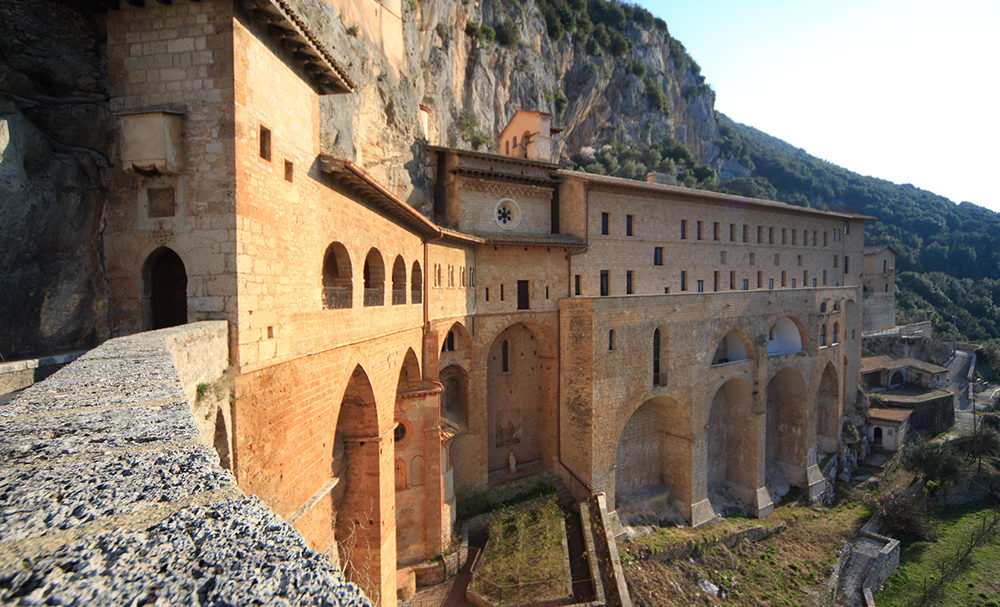
Sacro Speco Monastery in Subiaco
Whether history or legend, according to Tacito, the name of the town derives from Sublaceum, (under the lakes), the ancient denomination of Nero’s Villa. What we know for sure is that San Benedetto, the Patron Saint of Europe, chose this site as his hermitage for three years, retired in the Sacro Speco, an inaccessible cave in the mountains.
The Monastery was built much later to protect the small cave. Petrarca defined this mystical site, almost camouflaged in the rock overlooking the valley, as “The threshold of Paradise”. You can reach the hermitage on foot, while enjoying a sublime silent landscape. The Monastery hosts two overlapping churches entirely frescoed. Descending into the chapel, you will be fascinated by the unique, well-preserved portrait of San Francesco, created when the Saint was still alive, with neither halo nor stigmata. In the Rose Garden, San Francesco is said to have made the brambles flourish, on which San Benedetto sought freedom from carnal temptations.
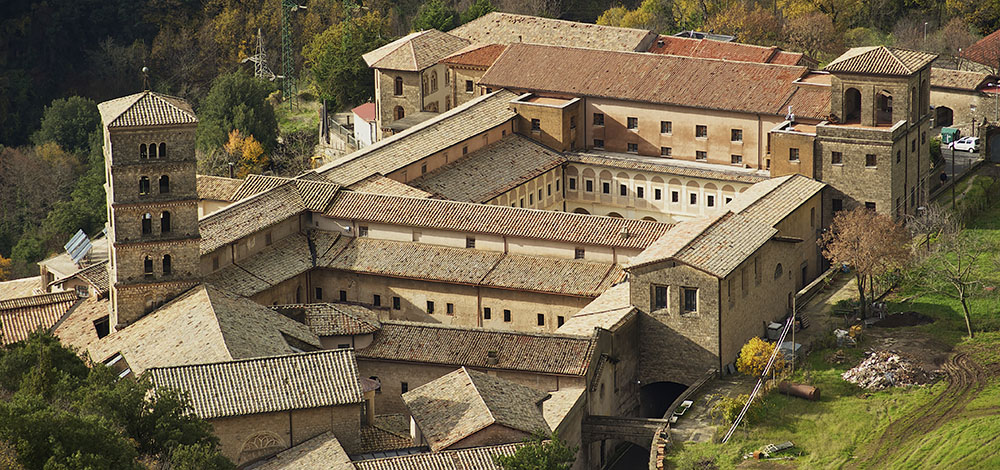
Santa Scolastica
Of the many monasteries built by Benedetto da Norcia in the Sublacense Valley, only Santa Scolastica survived. Modified several times, the sacred building now houses great treasures, such as the three Romanesque, Gothic and Renaissance Cloisters, a soaring Bell Tower, a Neoclassical Church from the 18th century by the original oratory, and an extraordinary Library. The latter is now a visitable National Monument, preserving illuminated manuscripts, parchments, and remarkable precious volumes, extremely important for the Benedictines. In Santa Scolastica, in 1465, two printers from Mainz, scholars of Gutenberg, the European father of today’s movable type printing, established the first printing press in Italy, and naturally published the first printed book.
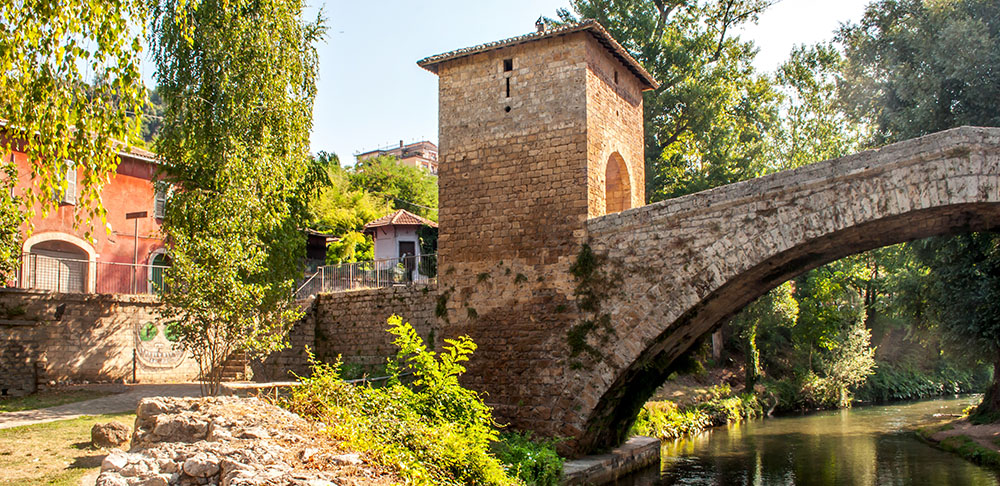
The Medieval Bridge of San Francesco, Subiaco
Finally, do not forget to take a walk in the historic centre of Subiaco, and to admire the Church and Convent of San Francesco from the 14th century, and the nearby Ponte di San Francesco, winner, for the bridge-category, of the “#setofculture” competition in Cannes. The medieval Rocca dei Borgia, dominating the village, is also worth a visit. According to some historians, Cesare and Lucrezia Borgia were born to Pope Alexander VI and Vannozza Caetani within these walls, at the end of the fifteenth century. The month of September, in Subiaco, is dedicated to the intelligent, charming Renaissance noblewoman, Lucrezia, with a rich programme of celebrations and events.

Monte Livata
The Monte Livata, which rises with its over 1400 metres height in the Simbruini Mountains in Subiaco, hosts two skiing resorts surrounded by beech forests.
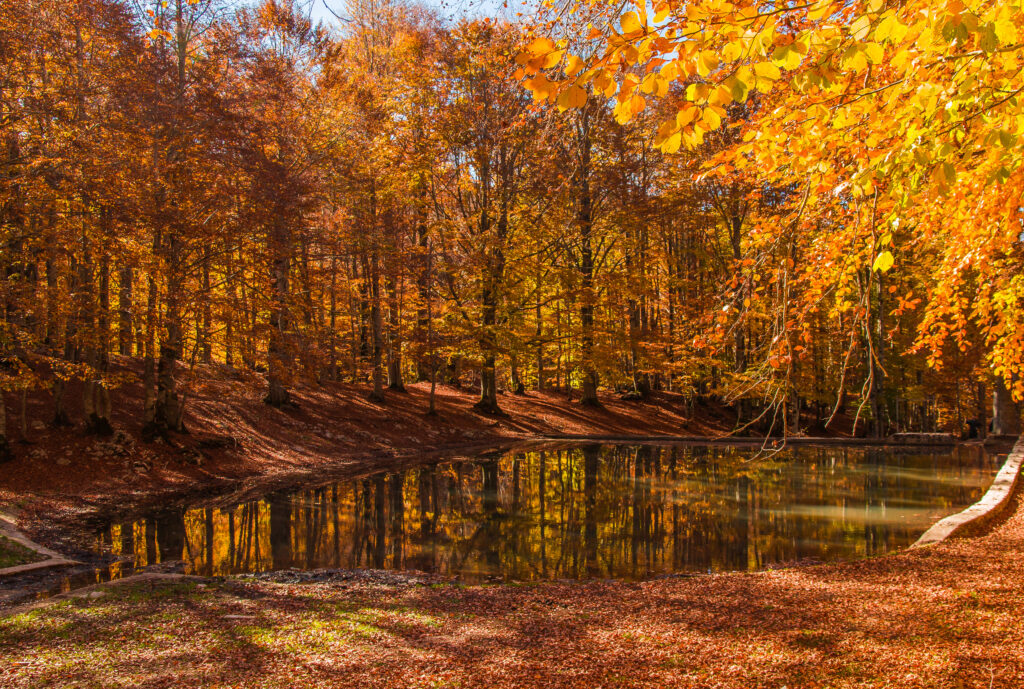
Campo dell’Osso in Monte Livata
La Bandita, or simply Livata, in the lower part of the mountain, includes the areas of the Anello and Valletta, where it is possible to ride a toboggan on rails and practice other winter sports. At a higher altitude we find Campo dell’Osso and the Fossa dell’Acero, with its downhill slopes of all levels and Nordic skiing and snowshoeing tracks.
Take an excursion to this magical place during the autumnal season and you will get fascinated by the spectacle of the trees turning yellow and red!
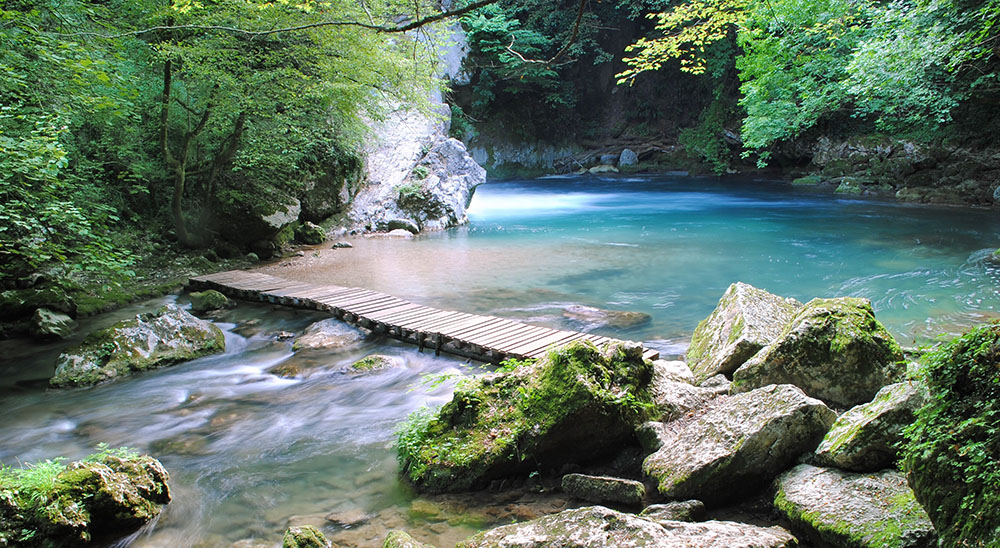
River and Mountains are the perfect combination to produce tasty and rich food. Ju pappaciúccu, from the pastoral tradition, is an energetic boiled blend of black cabbage, corn pizza, and stale bread. Other typical dishes are ju fallò, a bread with corn flour, the pulènna with pork ribs, the trotta n’ guazzetto (trout in a light tomato sauce), and the famous almond biscuits covered in icing, the subiachini.
